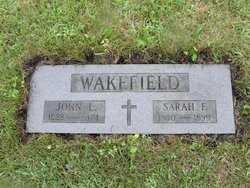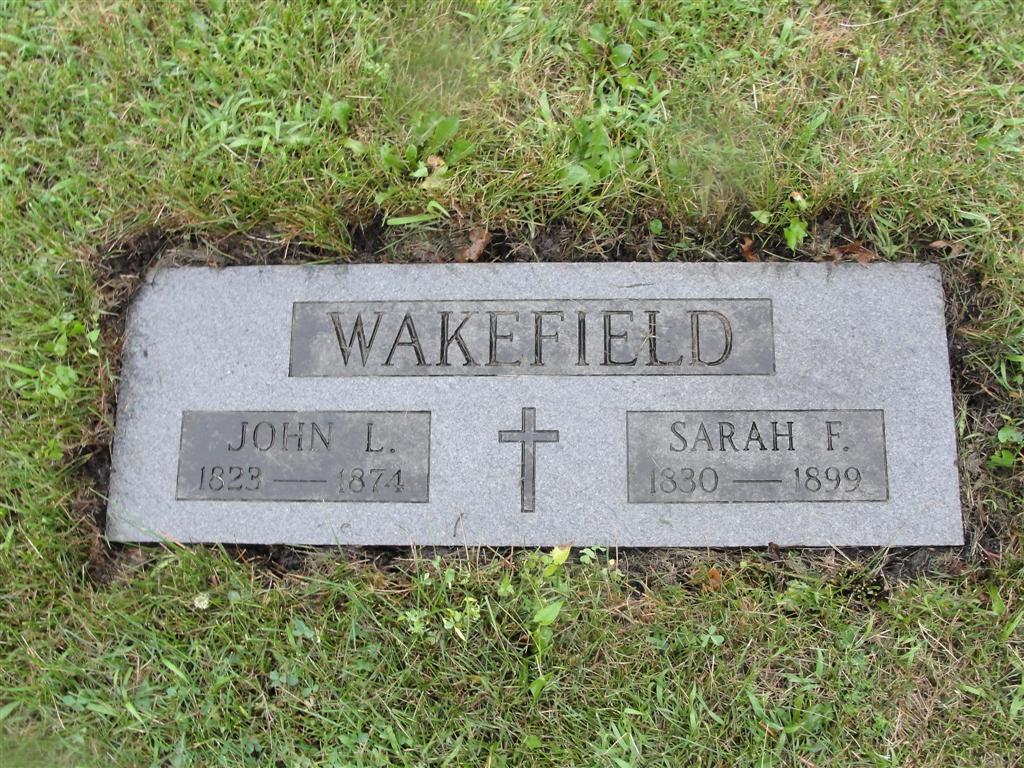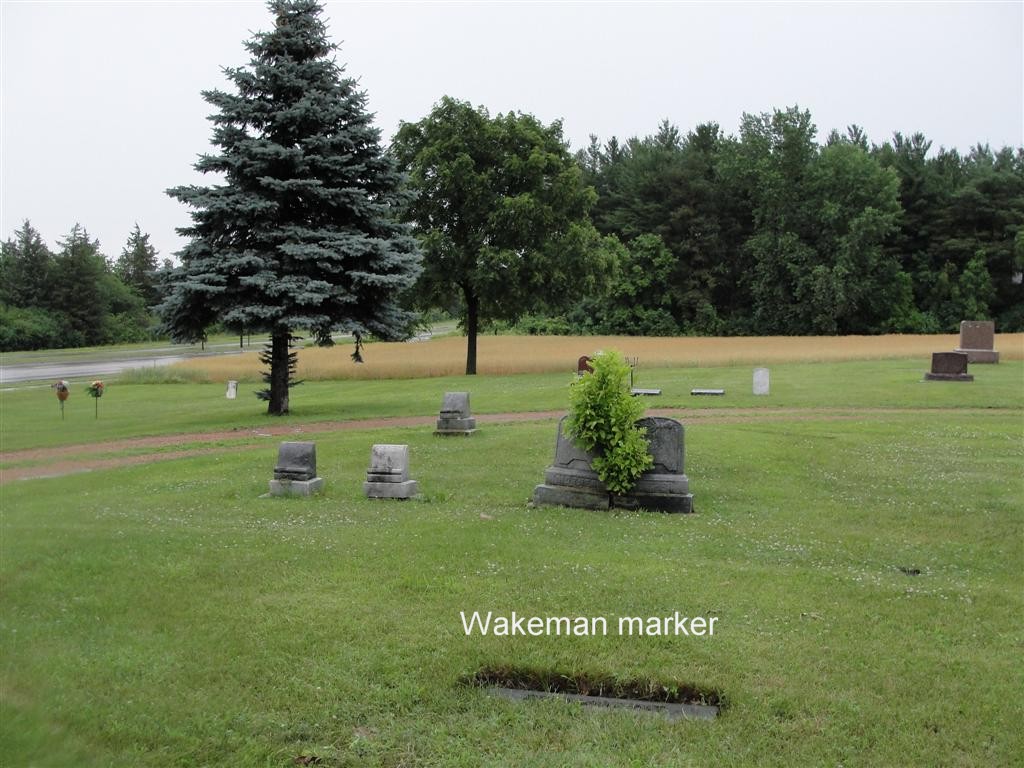He graduated from Yale Medical School at New Haven, Connecticut, in 1847. He first practiced medicine in Winstead, Connecticut, then moved to the California goldfields in 1849. He treated patients there until 1854, when he became ill with cholera and returned to Winstead. His younger brother James had graduated from Trinity College by then and became a lawyer. He and his brother decided to go west to Minnesota and settled in Shakopee in April, 1854. James became a successful land speculator, a state and then a federal legislator. John set up a medical practice there and was the town's second physician.
He married Sarah Brown F. Butts in Jordan, Scott County, Minn. on Sept. 27, 1856. He was listed as 33 years of age and she was 28. Their first child, James Orin, was born in 1858, the year Minnesota became a state. In June 1858, after a battle between the Dakota and the Ojibwes, he provided medical treatment to the Dakota who were wounded in the battle. In 1860, their second child, Lucy Elizabeth, also called "Nellie," was born. The family's house at the Upper Agency was located next to the agent's quarters and warehouse building.
The Dakota War broke out on the morning of August 18, 1862 at the Lower Agency. News of the events traveled to the Upper Agency, and white settlers, Agency employees, and friendly Indians, fearing for their safety, began to make their way to Fort Ridgely, the closest military fort in the area. Dr. Wakefield arranged for his wife and children to leave that afternoon with George Gleason, an Upper Agency clerk. They left at about 2 p.m. and traveled using Wakefield's horse and open wagon. On their way to Fort Ridgely, Gleason was killed and Sarah and her two children were captured by hostile Dakota.
The following day, a friendly Dakota who had converted to Christianity, John Other Day, led Dr. Wakefield and 61 other refugees from the Upper Agency across the Minnesota prairie, to Hutchinson. They arrived there safely.
Over the next six weeks, battles and skirmishes between the hostile Dakota and Minnesota military regiments, citizen soldiers, and white settlers who tried to defend themselves took place. On Sept. 26, about 2,000 Dakota surrendered to Henry Sibley's military troops at Camp Release. They released about 260 white and mixed-descent captives, mostly women and children, including Sarah and her two children.
After the war, they had two more children, Julie E. in 1866 and John R. in 1868.
Author Kathryn Zabellet Derounian-Stodola described him as a drinker, smoker, and bon vivant who died with outstanding debts that took up $4,500 of an estate valued at $5,073.
There was speculation that he may have committed suicide when he died suddenly from an overdose of opiates in February, 1874. He died at his home in Shakopee. (bio by: Cindy Coffin)
Sources:
Derounian, Stodola, Kathryn Zabelle. "The War in Words: Reading the Dakota Conflict Through the Captivity Literature," page 75.
Namias, June. "White Captives: Gender and Ethnicity on the American Frontier." page 205.∼OBITUARY
DR. J.L. WAKEFIELD OF SHAKOPEE
The intelligence of the death of Dr. J.L. Wakefield, which occurred at his residence in Shakopee on Tuesday morning was received with regret. The immediate cause of the Doctor's death is attributable to an over dose of an opiate. It appears that he returned home, and shortly after retiring requested his wife to call him at a specified hour. A short time after, the attention of his wife was attracted by his breathing, and upon attempting to arouse him found herself unable to do so. Assistance was called, but to no avail, and he expired soon after.
Dr. Wakefield was one of the old settlers of the Minnesota Valley, having located in Shakopee in 1854, at which place he has resided ever since, except while absent as Indian physician with Major Galbraith. He and his family were at the Agency at Yellow Medicine at the time of the outbreak in 1862. His wife and children were taken prisoners, but he escaped with the party that the Indian, John Otherday, brought away in safety. His family remained captives until released by Gen. Sibley. He was a physician of experience and ability, and a graduate of Harvard College; and a brother of Hon. James B. Wakefield, now of the Jackson Land Office. He was well known, and leaves many friends to mourn his death.
He graduated from Yale Medical School at New Haven, Connecticut, in 1847. He first practiced medicine in Winstead, Connecticut, then moved to the California goldfields in 1849. He treated patients there until 1854, when he became ill with cholera and returned to Winstead. His younger brother James had graduated from Trinity College by then and became a lawyer. He and his brother decided to go west to Minnesota and settled in Shakopee in April, 1854. James became a successful land speculator, a state and then a federal legislator. John set up a medical practice there and was the town's second physician.
He married Sarah Brown F. Butts in Jordan, Scott County, Minn. on Sept. 27, 1856. He was listed as 33 years of age and she was 28. Their first child, James Orin, was born in 1858, the year Minnesota became a state. In June 1858, after a battle between the Dakota and the Ojibwes, he provided medical treatment to the Dakota who were wounded in the battle. In 1860, their second child, Lucy Elizabeth, also called "Nellie," was born. The family's house at the Upper Agency was located next to the agent's quarters and warehouse building.
The Dakota War broke out on the morning of August 18, 1862 at the Lower Agency. News of the events traveled to the Upper Agency, and white settlers, Agency employees, and friendly Indians, fearing for their safety, began to make their way to Fort Ridgely, the closest military fort in the area. Dr. Wakefield arranged for his wife and children to leave that afternoon with George Gleason, an Upper Agency clerk. They left at about 2 p.m. and traveled using Wakefield's horse and open wagon. On their way to Fort Ridgely, Gleason was killed and Sarah and her two children were captured by hostile Dakota.
The following day, a friendly Dakota who had converted to Christianity, John Other Day, led Dr. Wakefield and 61 other refugees from the Upper Agency across the Minnesota prairie, to Hutchinson. They arrived there safely.
Over the next six weeks, battles and skirmishes between the hostile Dakota and Minnesota military regiments, citizen soldiers, and white settlers who tried to defend themselves took place. On Sept. 26, about 2,000 Dakota surrendered to Henry Sibley's military troops at Camp Release. They released about 260 white and mixed-descent captives, mostly women and children, including Sarah and her two children.
After the war, they had two more children, Julie E. in 1866 and John R. in 1868.
Author Kathryn Zabellet Derounian-Stodola described him as a drinker, smoker, and bon vivant who died with outstanding debts that took up $4,500 of an estate valued at $5,073.
There was speculation that he may have committed suicide when he died suddenly from an overdose of opiates in February, 1874. He died at his home in Shakopee. (bio by: Cindy Coffin)
Sources:
Derounian, Stodola, Kathryn Zabelle. "The War in Words: Reading the Dakota Conflict Through the Captivity Literature," page 75.
Namias, June. "White Captives: Gender and Ethnicity on the American Frontier." page 205.∼OBITUARY
DR. J.L. WAKEFIELD OF SHAKOPEE
The intelligence of the death of Dr. J.L. Wakefield, which occurred at his residence in Shakopee on Tuesday morning was received with regret. The immediate cause of the Doctor's death is attributable to an over dose of an opiate. It appears that he returned home, and shortly after retiring requested his wife to call him at a specified hour. A short time after, the attention of his wife was attracted by his breathing, and upon attempting to arouse him found herself unable to do so. Assistance was called, but to no avail, and he expired soon after.
Dr. Wakefield was one of the old settlers of the Minnesota Valley, having located in Shakopee in 1854, at which place he has resided ever since, except while absent as Indian physician with Major Galbraith. He and his family were at the Agency at Yellow Medicine at the time of the outbreak in 1862. His wife and children were taken prisoners, but he escaped with the party that the Indian, John Otherday, brought away in safety. His family remained captives until released by Gen. Sibley. He was a physician of experience and ability, and a graduate of Harvard College; and a brother of Hon. James B. Wakefield, now of the Jackson Land Office. He was well known, and leaves many friends to mourn his death.
Inscription
Wakefield
John L.
1823-1874
Sarah F.
1830-1899
Family Members
Advertisement
Explore more
Sponsored by Ancestry
Advertisement





